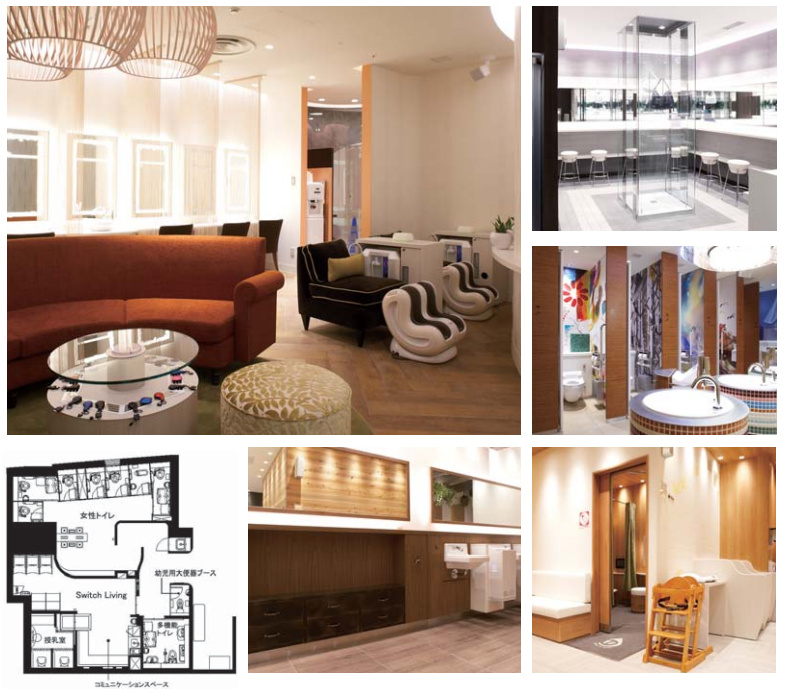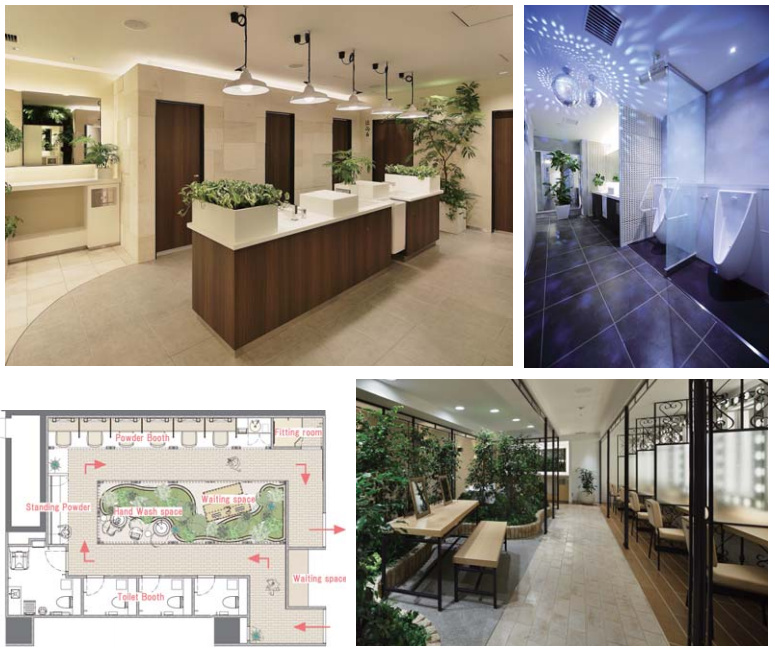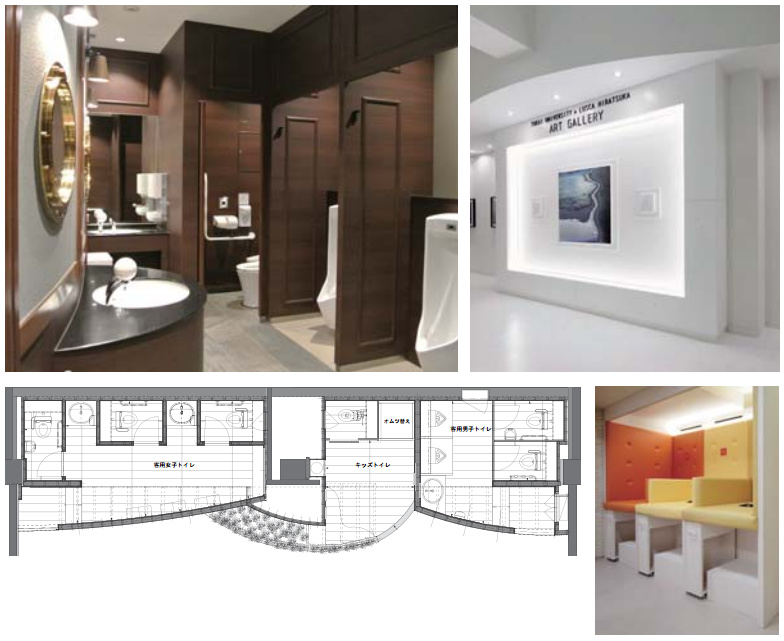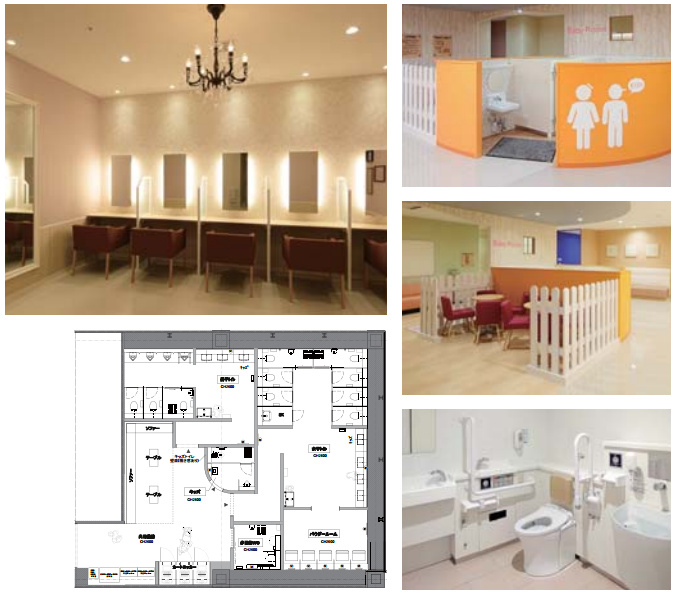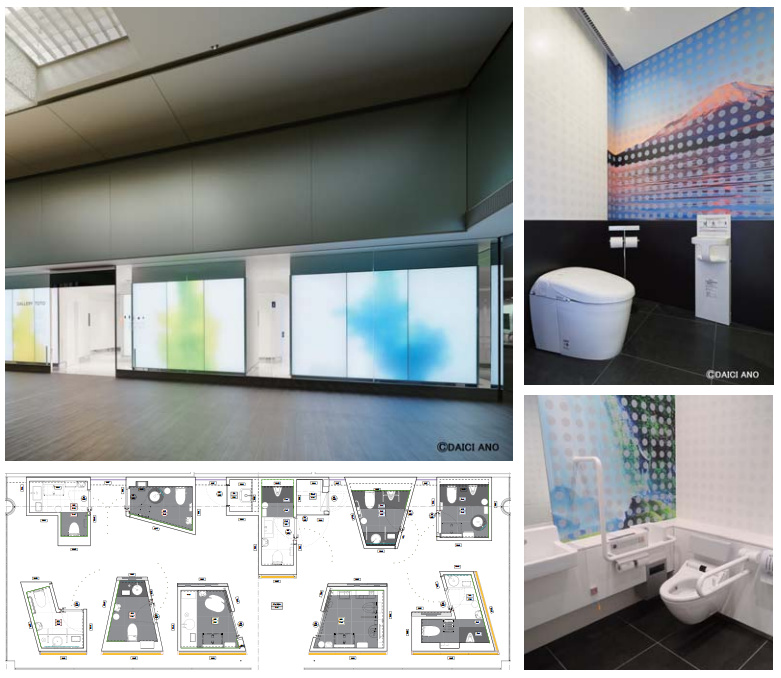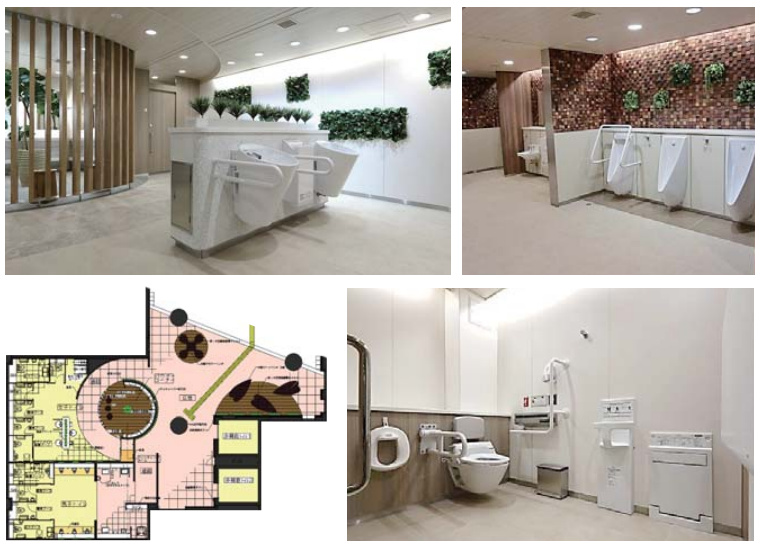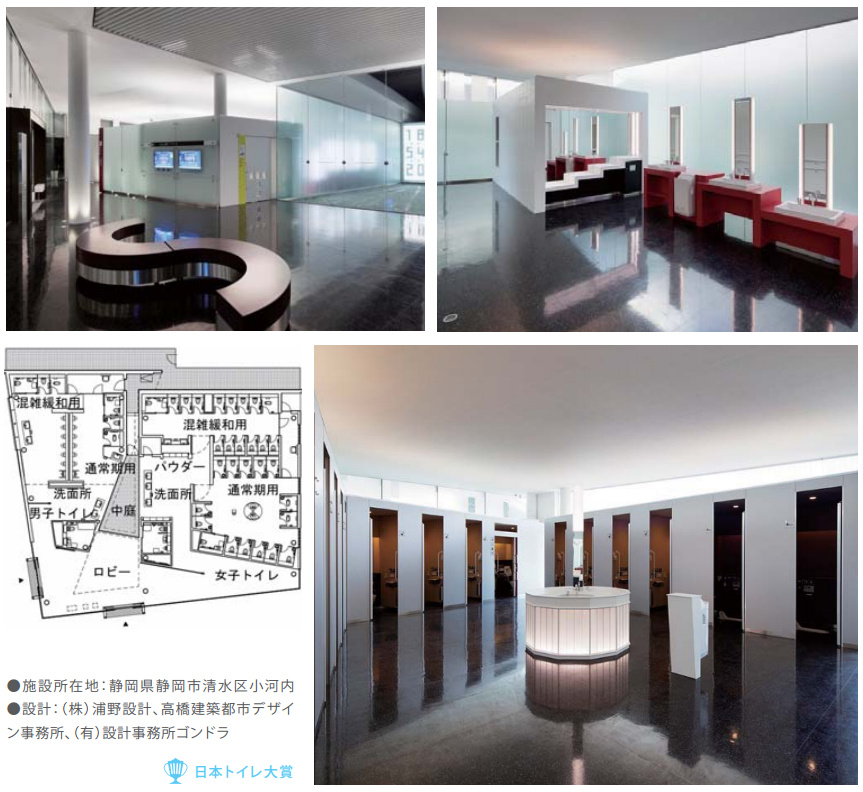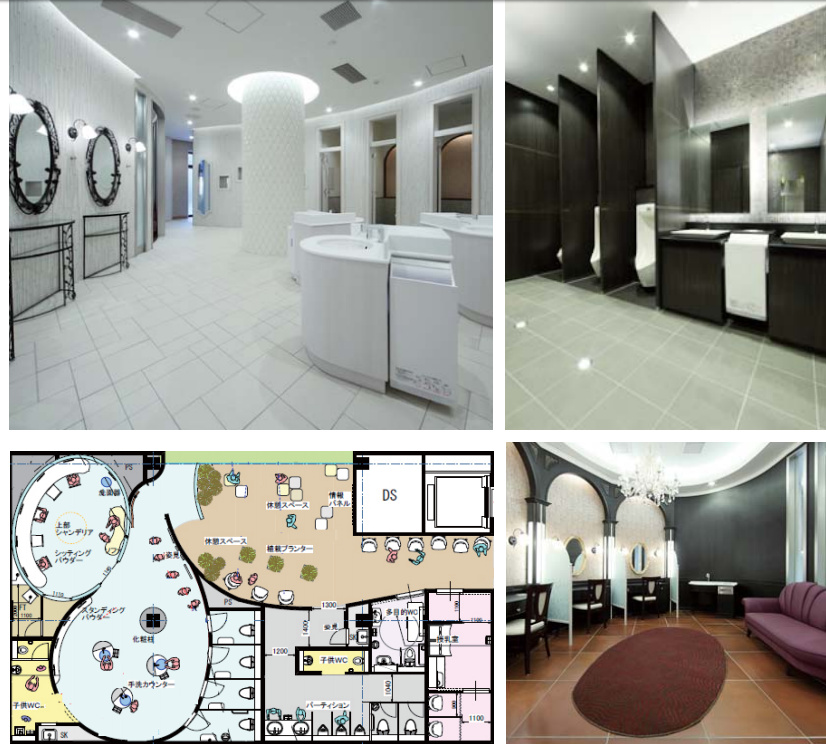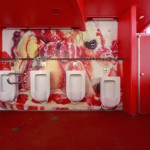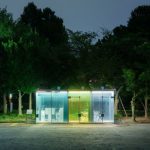It’s no secret that Japan has been a leader in the toilet industry, introducing cutting-edge designs and technology: everything from heated seats and rear-cleansing/drying washlets to deodorization. And this type of toilet devotion extends to public toilets too. In fact, the Japanese government even awards a highly coveted Toilet of the Year Award to spaces deemed worthy. After all, the government estimates that in our lifetime we spend up to 11 months in a bathroom. So why shouldn’t they be spaces that are clean, soothing and relaxing?
So, officials created a pamphlet (PDF) of public toilets they deemed exemplary, and distributed it earlier this year in hopes of elevating the entire public toilet industry. Here are a selection of government-approved public toilets.
Shibuya Hikarie Department Store (Tokyo)
In the “ShinQs” shopping section of the department store is an oasis of a bathroom. Five women were put on the project team to design their ideal bathroom, which they called “Switch Room” because it serves as a space where you can turn yourself off and back on.
Solaria Plaza Department Store (Fukuoka)
A space with plenty of greenery and a separate entrance and exit so those going in never bump into those coming out. The toilets are also strategically placed to make it easy to identify which stalls are not occupied.
Lusca Shopping Mall in Hiratsuka (Kanagawa)
This shopping mall has always taken a progressive stance to designing their toilets and often reach out to their female employees for feedback. Colaborating with art students from a local university, this bathroom incorporates a rotating art gallery of student work.
Yumetown Hatsukaichi Shopping Mall (Hiroshima)
A bathroom with an emphasis on friendly materials, colors and lighting that incorporates playful touches here and there.
Gallery Toto at Narita Airport Terminal 2 (Chiba)
At Narita Airport, Japan’s gateway to the world, an art installation-like lineup of toilets greet travelers. Here you’ll find iconic toilet-maker Toto’s latest toilet technology, which is of course available for public usage. We wrote about this project here.
Haneda Airport International Terminal (Tokyo)
At Haneda you’ll find a public bathroom that’s been specifically designed to aid and assist disabled travelers. Universal signage, wide passageways and even a toilet for service dogs makes this bathroom user-friendly for absolutely anyone.
Shin-Osaka Station (Osaka)
Modeled after a gazebo, this public restroom inside Shin-Osaka train station has wide passageways for wheel chairs and a layout that creates a more efficient flow (pun intended) of people.
Nihonbashi Station (Tokyo)
Various design choices were made to this underground public restroom at Nihonbashi Station to contrast the cave-like feel often associated with underground spaces.
Neopasa Shimizu Service Area (Tomei Expressway, Shizuoka)
Highway service areas usually have the grossest toilets. But not at Neopasa, where an oasis of clean and beautiful toilets await tired drivers and passengers. There are more than twice as many stalls in the ladies’ room, compared to the men’s, to combat longer lines. And a large monitor screen at the entrance even tells you which stalls are unoccupied.
Neopasa Surugawan Numazu Service Area (Tomei Expressway, Shizuoka)
This is the only service area along the Tomei Expressway that has views of the sea. So the operator decided to build their bathroom on the 2nd floor near the terrace and create a space where people want to go, not just because they have to go.


